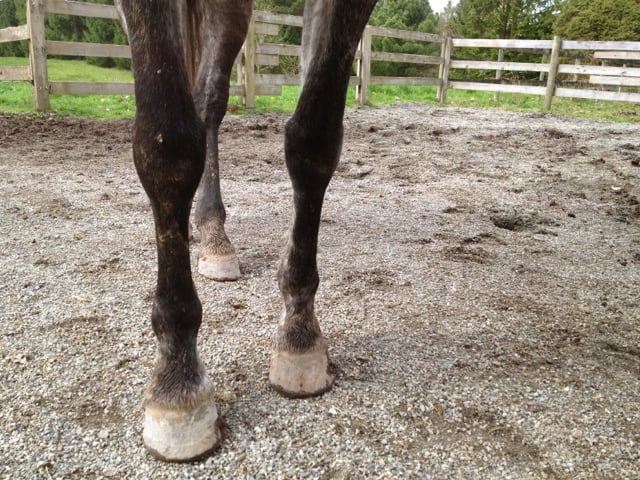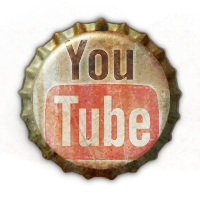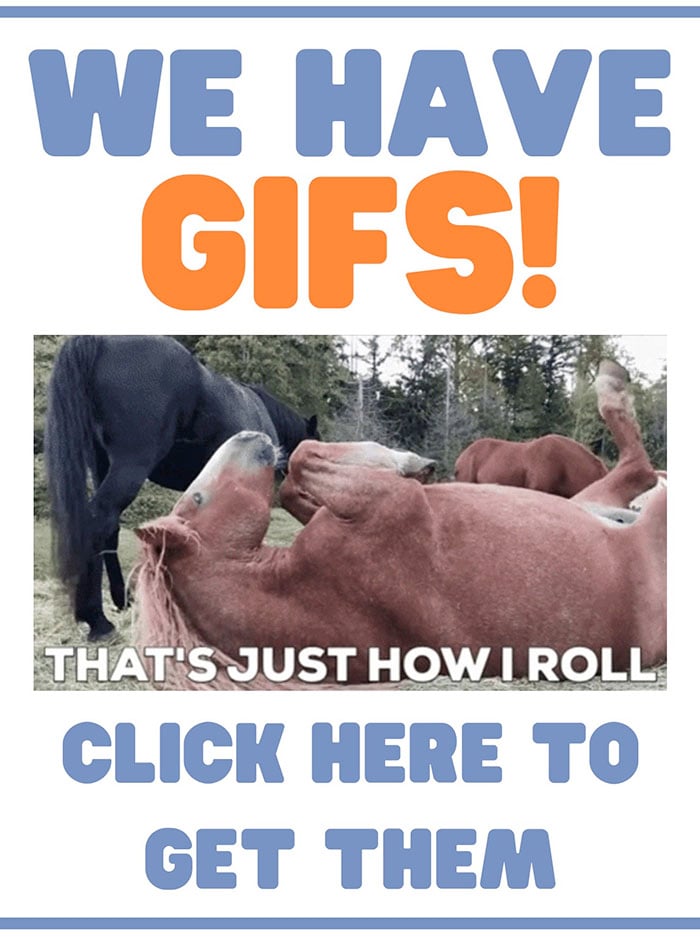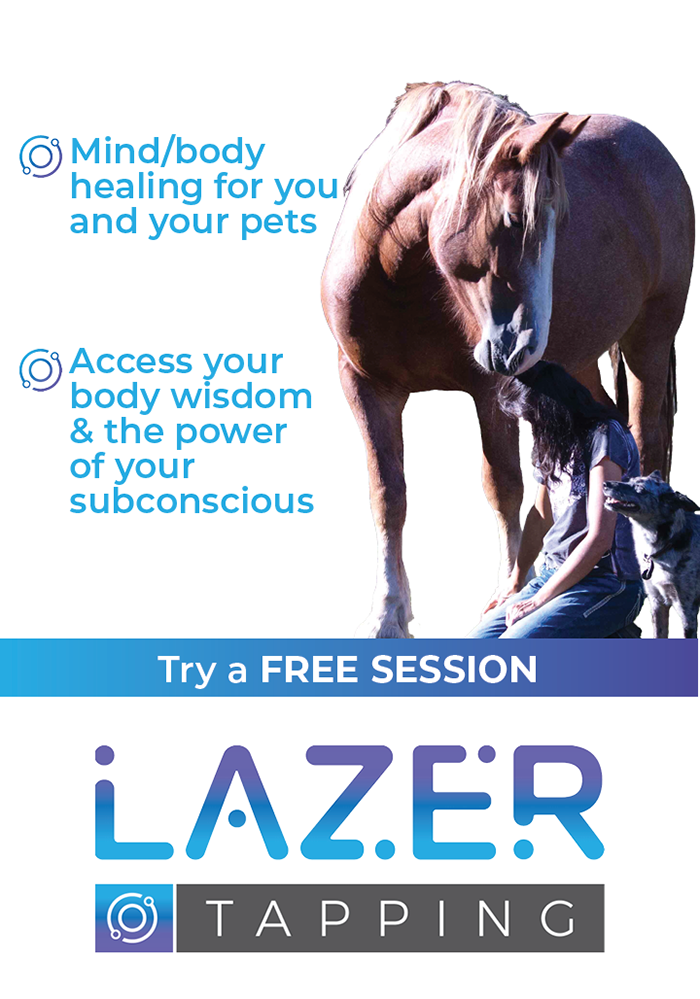I remember when I first started questioning the use of round pens and lungelines in horsemanship. It started by learning about the “flight zone” of the horse, the exact distance of which is debated – suffice to say that when a horse runs away from you in a confined space (whether it’s a fence, walls, or a line attached to his face that’s confining him), he can’t actually get away, which leads one to wonder if it isn’t actually a rather stressful experience for the horse.
But the psychology of circle work and confinement, as well as questionable methods like “join-up”, is a whole other discussion, and today I want to talk more about the physical effects of these practices. Recently I came across an article that pointed out the anatomical questionability of chronically working horses in circles, including arena work. Danvers Child of Foxtail Forge & Farriery is a farrier working out in Indiana, and he posted an article called “Going in Circles” on his Facebook page. He pointed out some key points that I’ve long been pondering in my vague, noncommittal way, and brought some ideas into sharp focus.
Here’s the thing – horses were built to travel in straight lines and, for most of history, that’s exactly what they’ve done, even since their involvement with our opportunistic species. From their natural roaming tendencies, walking and grazing across the plains, to plow, wagon, and carriage work, ranching, trekking, and hunting, they were, for the most part, working in straight lines. Of course, with military and cow work, as well as sporting activities like jumping and polo, they also performed complex and powerful lateral movements and transitions. Even in racing, as Child points out, the size of the ovals allowed for mostly straight movement.
“As they transitioned into show and competition arenas, however, they shifted away from straight line activity. We changed the game and asked them to become focused athletes and runway models. In doing so, we put them into smaller and smaller spaces and asked them to perform more and more patterned behaviors. Basically, we put them into patterned, repetitive movements—mostly in circles… little, tight circles. And they started to fall apart, experiencing more and more issues with joint problems, soft tissue injuries, and general lameness concerns.”
As a barefoot trimmer, I have recently been fascinated by the intelligence of the hoof, which, when you leave it be, often puts out seemingly imbalanced or bizarre growth that is all too satisfying to hack off and shape into a human concept of perfection. But as I trace those imbalances up, I almost never find a problem in the hoof. What I find is crookedness or imbalances in the limbs that the hoof is valiantly compensating for – that is, until a human “corrects” that hoof every 4 to 6 weeks.

So my own horses, who have thoroughly whupped my philosophical ass over the time I’ve known them, essentially cut circles out of our routines years ago. In fact, they cut routine out of our routines! Since committing to allowing them to express themselves (and listening when they do), I’ve stopped doing all kinds of things that I simply couldn’t justify. Lunge work and round penning are some of them (I also stopped riding, first in arenas, then completely, just to see what would happen – cool stuff happened!) so, suffice to say, they haven’t run in circles, at least in any significant amount, in a long while.
I started to notice that, while my own horses hooves have come straight over the years (despite the steep learning curve I’ve been on with trimming, many apologies to my unwitting guineapigs), many of the other horses I trim have persistent imbalance (extra growth or uneven wear) on either the outsides or insides of their fronts, and often have hinds that are turned out. It would be easy to blame myself, and I did for a while, until I started looking into the Hoof Guided Method and Rockley Farm, which brought up the consideration that the hoof might actually know what it is doing, and I was getting in the way in that arrogant human manner by trying to correct it.
You get used to staring at the distal limb as a trimmer. The hoof in itself is so bloody fascinating, there’s enough learning there to fill a lifetime. But I say I’m about holistic care, so how could I limit myself to one single phalange of the horse’s complex anatomy? When I started thinking further up the horses’ legs, and then beyond that to the why of imbalance, I started to see some answers. A lot of the flare I was seeing was the hoof making up for awkwardness in the anatomy – but how much could be blamed on conformation? Maybe the way we’re working our horses is actually causing lasting damage, even as we believe we’re strengthening them. The weird hoof growth is like a print-out of that damage. It’s a by-product, or a symptom, or a clue. Could it be that my horses’ legs had straightened when taken off routines that may have been incongruent with their anatomical structures? Was I seeing that result in their hooves? Does running in circles for hours every week damage horses to an extent that could explain the common imbalances I am seeing in my clients’ hooves?
Good stuff to ponder, and I haven’t reached any conclusions yet. But that’s not all I had to think about – Check out Part 2 for some revelations concerning collection.
A barefoot hoof trimmer, a singer/songwriter, an amateur farmer – these are some of the hats Kesia Nagata wears when she’s not full to bursting with wondrous equine co-creation.








That article from Rockley Farm is CRAZY!! And I love that he’s illustrated the whole thing with great photos.
So interesting Kesia. I too have spent many hours pondering each horses hooves and the best way to trim or shoe them. I firmly believe in doing the least amount possible when it comes to making a decision about how, when and what to decide to do when making decisions about deciding to shoe, just to trim or not to trim at all.
I prefer to have my horses bare foot. But I have some horses who much prefer to be shod. I know I’m probably the heretic of this group of horse listeners, because my horses still get ridden, mostly for work and sometimes for competition mostly with my children. As you know my horses are never stabled (except at feed time so no one dies), they live in a large paddock and are paddocked together. They are rugged as little as possible and I try to feed the least amount possible. So possibly my experience could be interesting to you 🙂
Also, my horses are hardly ever worked on a circle. We ride out in paddocks, like a trail riding situation or for work mustering in cattle. My children like to jump a little competitively.
I have noticed that the county my horses run on, their mineral profile or lack there of and condition of their gut seem to make the biggest difference for me. I don’t do circles or lunge so I can’t actually compare sorry!
The first example I’ll give you is of a TB gelding I rehomed off the track as a just turned 3 year old with a bowed tendon and flat, thin soled front hooves with a long toe. Initially I shod him and shod him short, trying to bring the toe back to give some relief for his tendon healing. He hated it. The nails were too close to the live structures of his foot and he walked like a cat on a tin roof. So I pulled the shoe, adjusted the depth of the nail holes and he was a lot happier. It did take him about 10 days before he was completely sound again though.
After this shoeing I didn’t reshoe him, but I did trim him a little. As you could predict he was very tender on most ground without his shoes, but it felt right to leave him and just see how he went. When he was fully acclimated to his new living conditions (paddocked in a large paddock in the bush in Australia) I moved him to a very large bush paddock with lots of native grasses and a rich mineral profile in the soil. It was a black soil paddock, and as it’s dry more often than it’s wet, that kind of soil tends to cause their hooves to crack and splay when they are not being tended. He stayed here for 12 months until he turned 4.
Conversely, the paddock where my horses live with me are on loamy, sandy soil and mostly buffel grass, with some natives interspersed. This type of soil, combined with what I feed tends to allow my horses to look after their hooves in a really positive way, no matter what hoof shape they have. I would like to point out that I feed very diligently to counteract the negative effects of the buffel which causes calcium to be leached out of their body, and can cause death when not managed in more susceptible horses.
After bringing the TB horse back in to re-access, I was very pleased with his tendon healing, although his feet were a bit of a mess and he was sore at the trot. So I decided to shoe his fronts to help him be more comfortable. Fast forward to now, 6 months later, he has been barefoot since that first shoeing. It has also rained, and he is being fed the right mineral quantities for where he is living. He is happy to even be ridden bare foot and is only a little concerned when walking over gravel or rocky surfaces (of which we don’t have many). I’m not sure if his feet would stand up to hard, consistence work as a mustering horse at this time, but maybe in another 12 months they would. At any rate, he belongs to my 14 year old daughter and set to be a best friend and low level show jumping horse, so the workhorse theory won’t be tested, and for now he is happy to be ridden 2 to 3 times per week, very lightly with a 45kg rider (yes she is super tiny person for her age).
Also, I haven’t trimmed his feet for about 2 months and while I would dearly like to bring the toe back more than it is, his feet are the best they’ve ever looked. They are starting to stand up on their own, are not at all splayed, but still a little long at the toes. I’m probably just putting off trimming him, as I don’t want to accidentally over do it and then getting in a shoeing cycle again.
I also have a quarter horse mare that I bought just over 2 years ago. She showed up with feet in terrible condition. She had been in flooded country for over 9mths and her feet were full of cracks, and bruises (that I saw when reshoeing her as they grew out). Her hooves were already a great natural shape, with no obvious weakenesses. They were all mostly black and seemed to have a deep enough sole. After my standard care for about 12 months, her hooves were free of cracks and seemed strong enough. I thought she would be a great candidate to become barefoot, however, she trips a lot when I only trim her as a barefoot horse (maybe I don’t know what I’m doing, but I don’t take off as much when I’m not putting a shoe on). Also, she moves in a way that protects her feet, especially when she’s under pressure, which causes muscle tension in a negative way and a bracing in her body. I believe this will cause issues long term if I were to try to ride her without shoes.
The third horse I’ll mention is Tangles. I have introduced her before so you might be familiar with her already. Having bred her I can know for sure her whole life story. She is now 14 and in her early life she was unshod until she was older than 4. At this time, I shod her because that’s what I’d always done to put horses into consistent work. She never showed any signs of lameness or tenderness and her hoof structure was almost perfect, except for being very slightly pigeon toed. Notably she also had and still has very mild stifle lock in her N/S hind. She doesn’t develop flares at all in her back feet and only a slight flare in her N/S front which is the most turned in.
…..And I really wish I had never shod her! Her feet were so tough. In the beginning I could ride on any ground and she never faulted. Now, she is stronger and more comfortable with her shoes. Maybe if I knew how to rehab her feet to bare foot properly she would be strong again. When bringing her back into work, she is ridden bare, but as soon as work becomes intense she is shod.
So in summary, when my horses are turned out, they are all barefoot and trimmed accordingly. I tend to leave them alone a lot. I don’t like to be annoyed when I’m on holidays, so I give them the same consideration and they look after themselves.
I would absolutely agree that working a horse in circles intensively would have affect the structure of the hoof. I find the hoof an incredible thing. When it’s healthy you can feel how alive and connected to the rest of the horse it is and when it isn’t healthy how it can feel dead, hard, disconnected and almost pinched off from the horse. I also think that being lunged in a circle is a bit soul destroying, so I wonder if there will be a connection made in the future between spiritual health/physical health/emotional health and how it directly affects the hoof.
I think though that like us. This discussion is multi layered and as complex as each individual horses life expression, desires and life path choices and experiences and the humans who tend them. Likely there are countless things affecting each horse individually, and quantifying them will likely take someone as unique as Louise Hay combined with some huge generalisations.
I absolutely love these discussions. And I’m grateful that you allow me to share my experiences even though, my horses don’t live as free a life as yours do. I would also like to add for anyone who might be concerned, that I appreciate all the things that I might be doing ‘wrong’. But I am doing my very best with the life that I am currently living and doing the very best for my horses that I can. I will say that my horses do get some choice, probably a lot compared to most domestic horses in a ridden situation. They like to be around me. And I do my best to listen to them and accommodate their wishes as best I can.
Thank you again
Tam
Thanks so much for sharing! I love that so many people are thinking outside of the box. As you say, we need to spend more time asking our horses and then listening to what they say. Even, and perhaps especially, if it isn’t the answer we expected.
Amen sister!